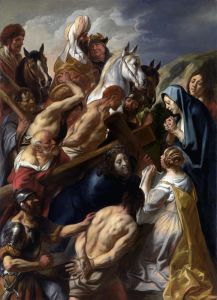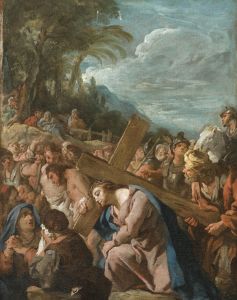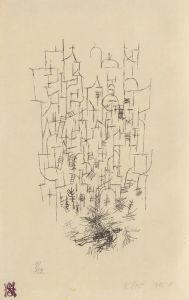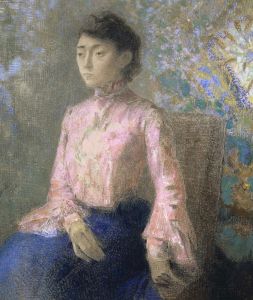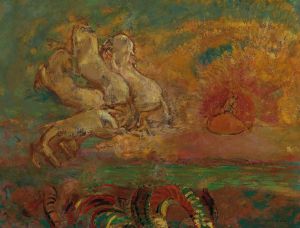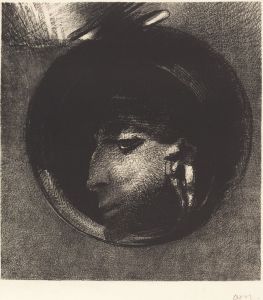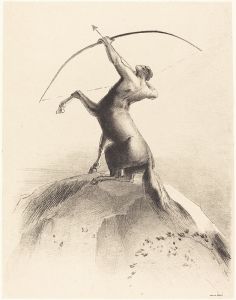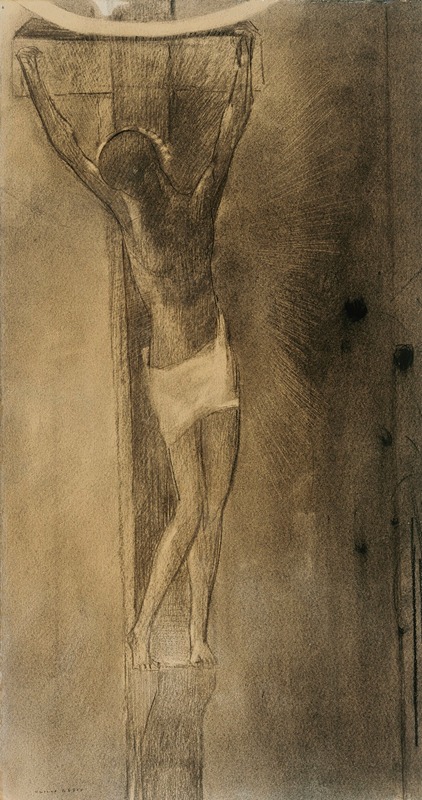
Crucifixion
A hand-painted replica of Odilon Redon’s masterpiece Crucifixion, meticulously crafted by professional artists to capture the true essence of the original. Each piece is created with museum-quality canvas and rare mineral pigments, carefully painted by experienced artists with delicate brushstrokes and rich, layered colors to perfectly recreate the texture of the original artwork. Unlike machine-printed reproductions, this hand-painted version brings the painting to life, infused with the artist’s emotions and skill in every stroke. Whether for personal collection or home decoration, it instantly elevates the artistic atmosphere of any space.
Odilon Redon was a French symbolist painter, printmaker, draughtsman, and pastellist, known for his unique and imaginative works that often explored themes of fantasy and spirituality. One of his notable works is "Crucifixion," a painting that reflects his distinctive style and thematic interests.
"Crucifixion" by Odilon Redon is an artwork that exemplifies his departure from traditional representations of religious subjects. Redon, who lived from 1840 to 1916, was part of the Symbolist movement, which sought to express ideas and emotions through symbolic imagery and often delved into the realms of dreams and the subconscious. His works frequently featured ethereal and otherworldly elements, and "Crucifixion" is no exception.
In "Crucifixion," Redon approaches the subject with a focus on mood and atmosphere rather than strict adherence to religious iconography. The painting is characterized by its use of color and form to evoke a sense of mystery and introspection. Redon's use of pastel hues and soft, flowing lines creates a dreamlike quality, inviting viewers to contemplate the deeper spiritual and emotional aspects of the scene.
Unlike traditional depictions of the crucifixion, which often emphasize the physical suffering of Christ, Redon's interpretation is more abstract and symbolic. The figures in the painting may appear less defined, blending into the background and emphasizing the transcendental nature of the event. This approach aligns with Redon's broader artistic philosophy, which prioritized the evocation of inner experiences and emotions over realistic representation.
Redon's "Crucifixion" can be seen as a reflection of his interest in exploring the intersection of the spiritual and the material worlds. His work often drew inspiration from literature, philosophy, and his own introspective nature. The painting may also reflect the broader cultural and artistic shifts of the late 19th and early 20th centuries, as artists began to challenge traditional narratives and explore new ways of seeing and interpreting the world.
While specific details about the creation and exhibition history of "Crucifixion" are not extensively documented, it is consistent with Redon's body of work during this period. His art was well-received by contemporaries who appreciated his innovative approach and the emotional depth of his compositions. Today, Redon's works, including "Crucifixion," are celebrated for their contribution to the Symbolist movement and their influence on later developments in modern art.
Overall, "Crucifixion" by Odilon Redon is a testament to the artist's ability to convey complex spiritual and emotional themes through his unique visual language. It invites viewers to engage with the painting on a personal and introspective level, reflecting Redon's belief in the power of art to transcend the visible world and touch the soul.







